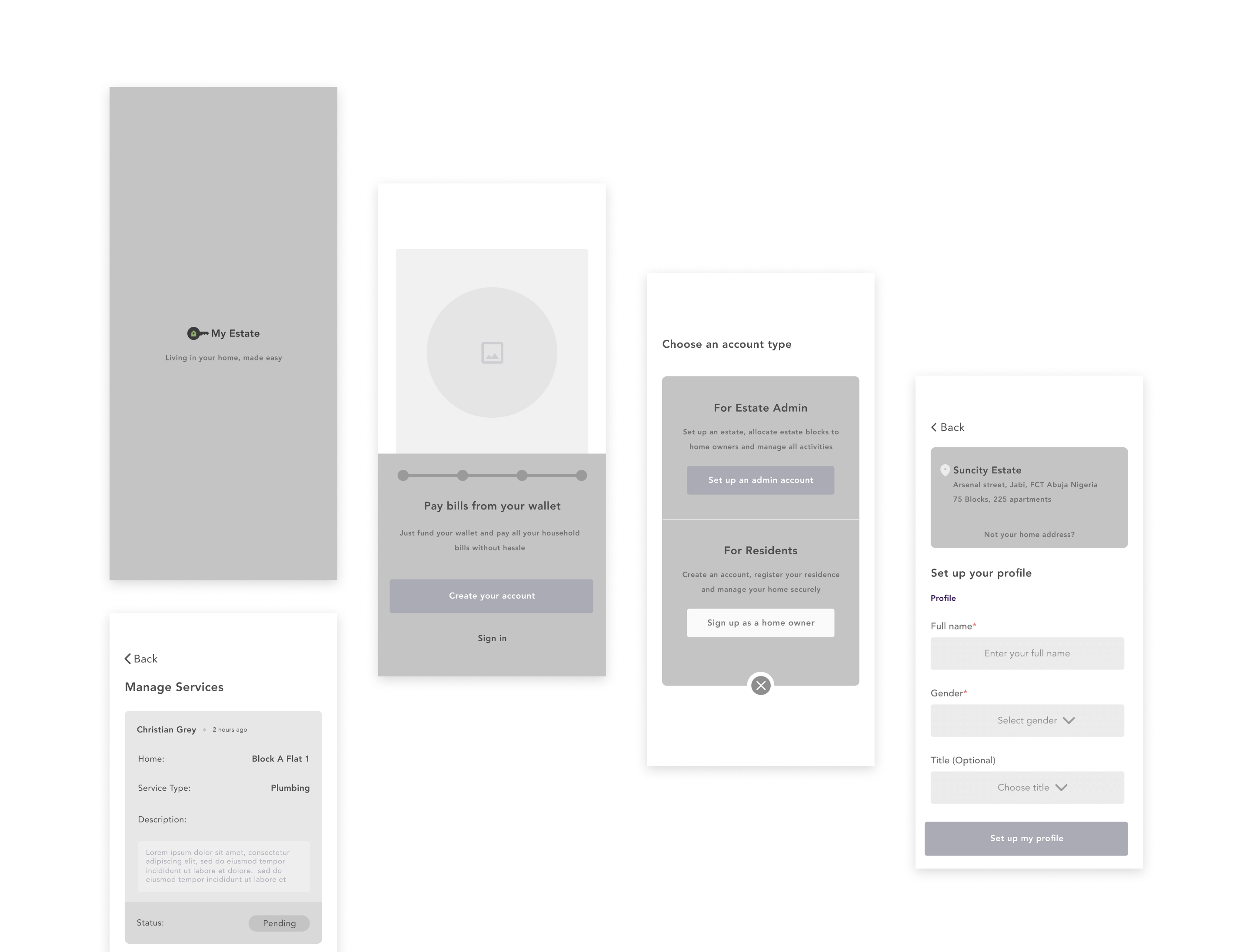The goal was to create a unique
solution, focusing on 4 key features:
Visitor’s regulation
With an easy visitor registery
and directory, you can easily add someone coming to visit your home.
Bill payments
Pay service charge and domestic
home bills directly from My Estate Mobile App without a need for an external
app.
Swift access to emergency
Report health hazards and
security related issues to the right authorities directly from the app and get
actionable feedback/response.
Access to service workers
Home owners can escalate issues
they are facing to admin and equally to estate service workers in a secure and
effective way
the challenge.
The actual focus for this project was
to make living in estates easier and to automate some basic functions that is
common to practically all estates or unified housing communities. The initial
problem that birthed this idea according to the stakeholders was to solve a
problem of managing visitors in a tightly secured environment. They had an
existing product which they hadn’t launched because the team got stuck in the
middle and the process came to a halt. Also the client were not impressed with
the interface and the experience of the app. They said they were not delighted
to use the app and they don’t think the end user would too.
The client wanted a unique and
appealing solution that delivers and multiplies value in each element of the
project and also, convenient to manage homes quickly and easily.
the process.
After listening carefully and meeting
physically with the business owners, and some brainstorming, assessing their
existing product, I diagnosed and advised a redesign and full overhaul of the
product. I performed heuristic analysis prior to that prescription on the
product and also did some further user testing while carefully taking notes of
the underlying problems. The research really helped with a lot of valuable
insights and ideas used in the project and to narrow down a roadmap.
The UX phase began with getting to
know the users and their behaviours. I started redesigning the information
architecture which helped me define which parts of the application needs more
optimization.










